To be an entrepreneur is to be different. Ask any successful entrepreneur and they’ll tell you that they feel it every day. Entrepreneurs don’t want the same things everyone else does. The idea of a stable 9-5 office job? Just the thought would send a shiver down their spine.
Instead, entrepreneurs are driven by a passion to do something new, to push the boundaries of what’s possible. But often, entrepreneurs have trouble sticking to the rules. They might have struggled at school, forced to spend hours listening to teachers drone on about subjects they have no interest in.
In fact, some of the most successful entrepreneurs never made it through college. Steve Jobs, Mark Zuckerberg, and Travis Kalanick of Uber were all college dropouts. Increasingly, high schoolers are choosing to skip university altogether, feeling that the education system hasn’t kept up with the pace in which new technologies and industries are emerging.
Larry Summers, the economist and former president of Harvard University agrees, “Not enough people are innovating enough in higher education. General Electric looks nothing like it looked in 1975. Harvard, Yale, Princeton, or Stanford look a lot like they looked in 1975.”
Add the explosion of student debt, and the fact that almost half of millennial graduates feel that their degree was “very or somewhat unimportant” to their current job. It’s no surprise then that so many young people are questioning the path they just assumed they’d be traveling down.
Emma Reid is part of that new generation. She’s one of many young entrepreneurs who are carving out their own path, outside of the expected school-to-university track.
I called her up to hear more about her story. She takes us back to her beginnings as an 11-year-old entrepreneur, hustling to make $100. Then she takes us through the journey to building a $500,000 ecommerce business that she later walked away from. Through honesty and vulnerability of the realities of what it takes to succeed, Emma shares her experience as an entrepreneur.
Post Contents



Emma Reid the Entrepreneur
When I first came across Emma on Instagram, I could tell she was different. The 22-year-old Australian has built a following around her ecommerce advice and mentoring services. Through it, she’s committed to sharing the reality of life as an entrepreneur, without the smoke and mirrors.
The world of ecommerce gurus is crowded, but Emma stands out. In a sea of gurus posing next to lamborghinis, Emma proudly displays her own – a blue 2004 Toyota Camry with sun faded paint. “Cars are not assets,” she declares. “That’s why I don’t need a fancy one.”
→ Click Here to Launch Your Online Business with Shopify

She doesn’t need to try to come across as the biggest, baddest ecom hustler. For Emma, entrepreneurship is natural.
School on the other hand? She hated it.
“It just didn’t interest me,” she says. “I wasn’t learning at my own pace, and I wasn’t learning things that I was really passionate about learning. But when I was learning online stuff, it just really excited me and I’d get obsessed. I could never do that with school.”
So at age 16, she decided she would skip university and devote herself to a different path. After all, she’d already found her passion online. Choosing not to go to university, Emma says, “opened up some doors for me and opened up my mind to other avenues. I realized that you can make money doing other things. And you don’t have to go and get like that piece of paper.”
Instead she credits much of her success to to video games, and the fact that she’s been at this entrepreneurship thing for a while now.
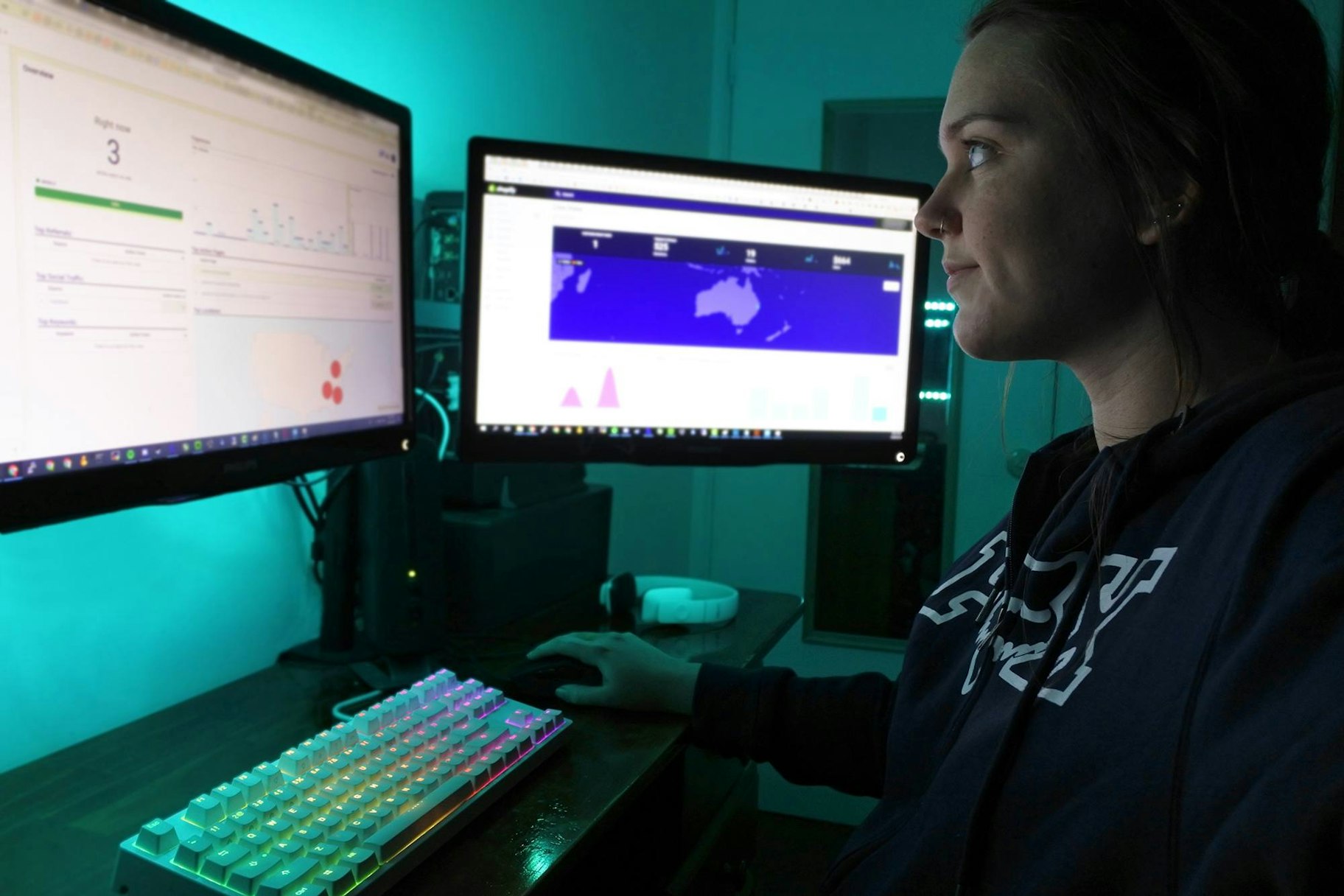
Beginnings of Entrepreneurship
At 11 years old, Emma started her first online business. Flashback to the pre-Facebook days, and Emma was spending all her time on the social networking game Habbo Hotel. The site allows you to create a virtual character, build your own hotel, and furnish it with little pixelated furniture. To build the lushest pixel-hotel, you’d need to have enough Habbo credits, an in-game currency that could be purchased with real-world dollars.
Sensing an opportunity, Emma found a loophole that allowed her to spend her pocket money on Habbo credit gift cards, buy in-game furniture, and then flip it when prices went up. Then she could then sell onto other players for cold hard cash. Each transaction, she’d make a small margin.
“I made about 100 bucks doing that, which was pretty fun at 11,” she says.
An avid gamer, Emma believes that video games are ideal breeding grounds for entrepreneurs. “I’ve met a few people that were really into video games that are entrepreneurs,” she says. “Often they’re successful because they’re used to leveling up, gaining experience, and the grind. Also when you’re young and you’re involved in online marketplaces with in-game currency, I think that can give you a different relationship with money.”
At 16 came her next business idea. Over the previous few years, she’d been spending her time building up followers on her Tumblr blog, and had amassed over 100,000. She installed advertising on her page, and as traffic grew, so did her revenue. She’d heard of affiliate marketing, and realized she could use the traffic on her blog to generate money through affiliate links. Soon, she was making thousands of dollars a month.
What she didn’t realize is this was a big no-no in Tumblrs books. She’d violated their terms of service. In one swift moment, all 100,000 of her Tumblr followers were gone. Ouch.
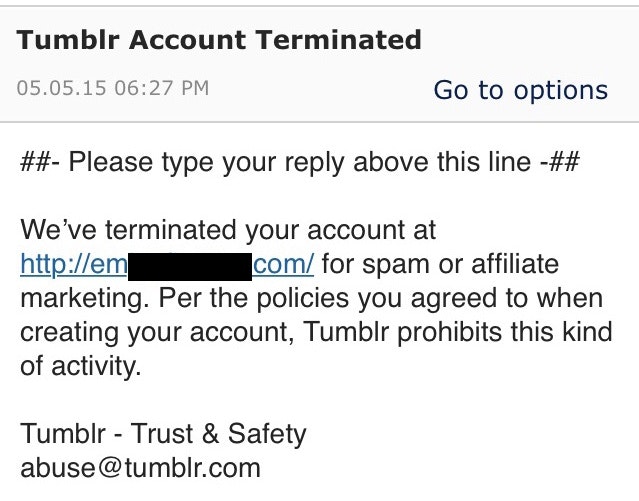
She immediately realized how vulnerable she’d been by having her whole audience contained on someone else’s platform. It meant she had to play by their rules, and in the end, they had all the power.
“I learned a lesson that you have to control the traffic. Otherwise if you’re just on someone else’s platform, then they can shut you down.”
She stored the event away in her mind, another business lesson learned.
It was some time in 2016 when Emma first heard about Aliexpress dropshipping. She’d come across a post on a forum detailing the process of running an ecommerce business without holding inventory.
Her entrepreneurship senses tingled.
“I spent probably 10 hours reading the entire thread,” she says. “Then I chucked up a store on WordPress on my new fitness blog, and got a sale that first day.”
Her first product? Bracelets with fitness quotes attached, a clever product match for her blog filled with stretching routines and fitness advice.
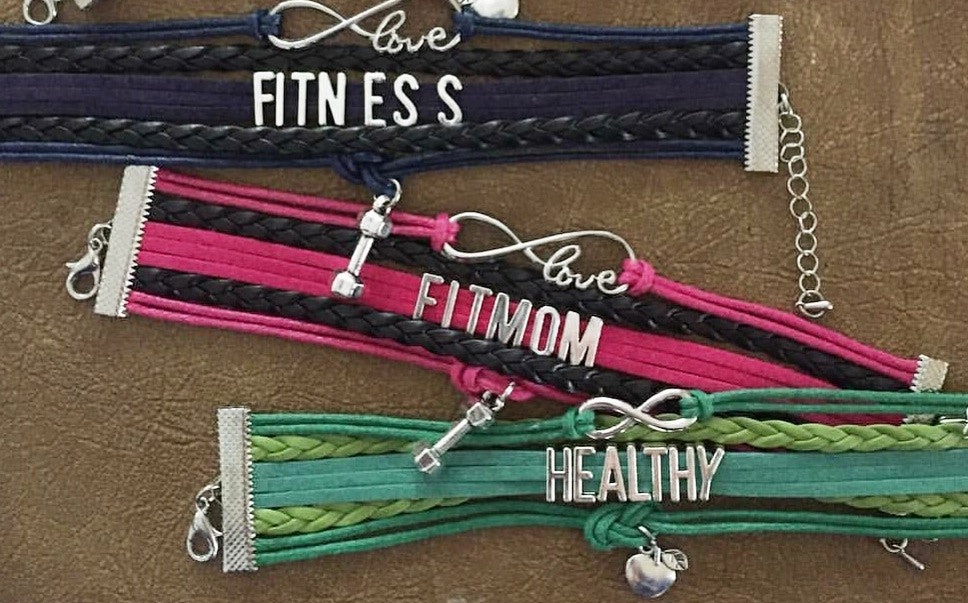
She was about six months in and her business was growing, to the point she was processing hundreds of orders a day. But then things came apart. Customers began to email her, asking where their products were. They hadn’t received them. She didn’t know what was happening, but reached out to her supplier that was handling the deliveries. “I had around 300 orders, and then the supplier didn’t fulfil any of them,” she says, sighing.
The situation quickly descended into a nightmare, as more customers complained that their order never turned up. “I had to process all these refunds. No other suppliers had it, and I just didn’t know what to do. It was too late.”
| Pro Tip: Having a great supplier makes all the difference to your success. Check out our guide to finding the best dropshipping suppliers. |
The Rise and Fall of the $500,000 Store
Then in May 2018, Emma decided to try dropshipping again. This time, she built her store with Shopify and used a dropshipping app to connect her store to suppliers’ products.
She began scouring Instagram for potential audiences to sell to. She already knew she wanted to focus on selling jewelry (more on her product strategy coming up), but she needed to find an audience to target. On Instagram she came across a niche community of animal lovers, and began interacting with them.
She’d spend all day and into the night working on the animal jewelry store. But it didn’t feel like work. The hours would happily melt away, as she entered a state of flow.
“I was working pretty much 100 hours a week. I was obsessed with it, and just testing everything and scaling.”
Her store began to pick up sales. Slowly, slowly, then all at once.
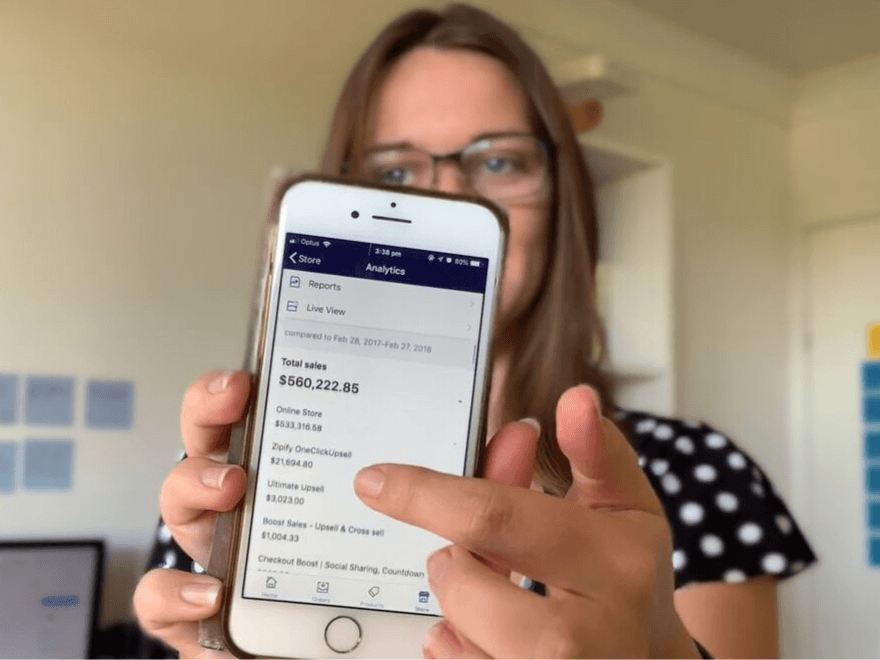
By early December, the holiday season was in full force and shoppers were purchasing more than ever before.
“Everyone was buying for Christmas, so I scaled up my ads,” she says. “I was spending over $5,000 a day.”
As demand for her products skyrocketed, her supplier began to fall behind.
“Everything was going crazy but my supplier was taking a while to send because they didn’t have enough stock to keep up,” she says. “I was trying to send to fulfilment centers at that stage, but I started a bit too late. The stock wasn’t arriving in the US fast enough.”
Customers were eagerly waiting on Christmas presents, but they weren’t arriving in time.
“I had to refund a lot of people, do a lot of customer service,” she says. “That was really bogging me down.”
Her store had made over $500,000 in revenue, but after spending all of her free time processing refunds and dealing with angry customers, she was burned out. History had repeated itself from her first store, but this time it was at a much bigger scale.
“I actually quit the store because I didn’t hire out, and I didn’t put systems in place.”
“I wanted to do it all myself because it was so fun for me. But eventually problems happen and you’re so focused on fixing your problems that you can’t hire out once it’s too late.”
So she turned off her ads, shut down her store, and stepped away. “I decided let’s just leave it there, try to recover a little bit and plan what’s next.”
Learning to Master Her Mindset
From the outside, Emma’s business looked like a success. After all, she’d made over $500,000 in revenue in less than a year.
But it left her feeling exhausted and altogether defeated. She needed some time away.
“I picked a few hobbies and read a lot of books and reflected and kind of figured out where I was gonna go next with this,” she says.
And as she read books like Can’t Hurt Me by David Goggins and How to Fail at Almost Everything and Still Win Big by Scott Adams, she began to see how she was holding herself back.
“I realized that I was doing way too much myself, and that I needed to actually connect with people and work on myself,” she says. “I realized I needed to build up the foundations, build some confidence to actually go on camera, or go to events and talk to people or hire people.”
Ever since she began her entrepreneurship journey selling Habbo Hotel game credits, she’d been doing it alone.
“Now I’m starting to see that you definitely need to be in that environment where you’re around more people and brainstorming, throwing stuff at each other and improving on ideas,” she says. “That’s how you can really grow.”
So in mid 2019, in an attempt to push herself outside of her comfort zone and meet more entrepreneurs, she started publishing videos on YouTube and Instagram. She’s started a new store too, and has made over $30,000 in revenue so far. In her videos she proudly shares her successes, but more importantly, her failures.
“Showing your flaws and failures alongside your success is so important,” she says.
With a change in her mindset and her burgeoning new store, Emma has set her sights on something bigger than she ever imagined before. When I ask her where she’ll be in five years, she answers confidently, “I’ll be starting a multi-million dollar white-label brand.”
I can’t help but believe she’ll do it.
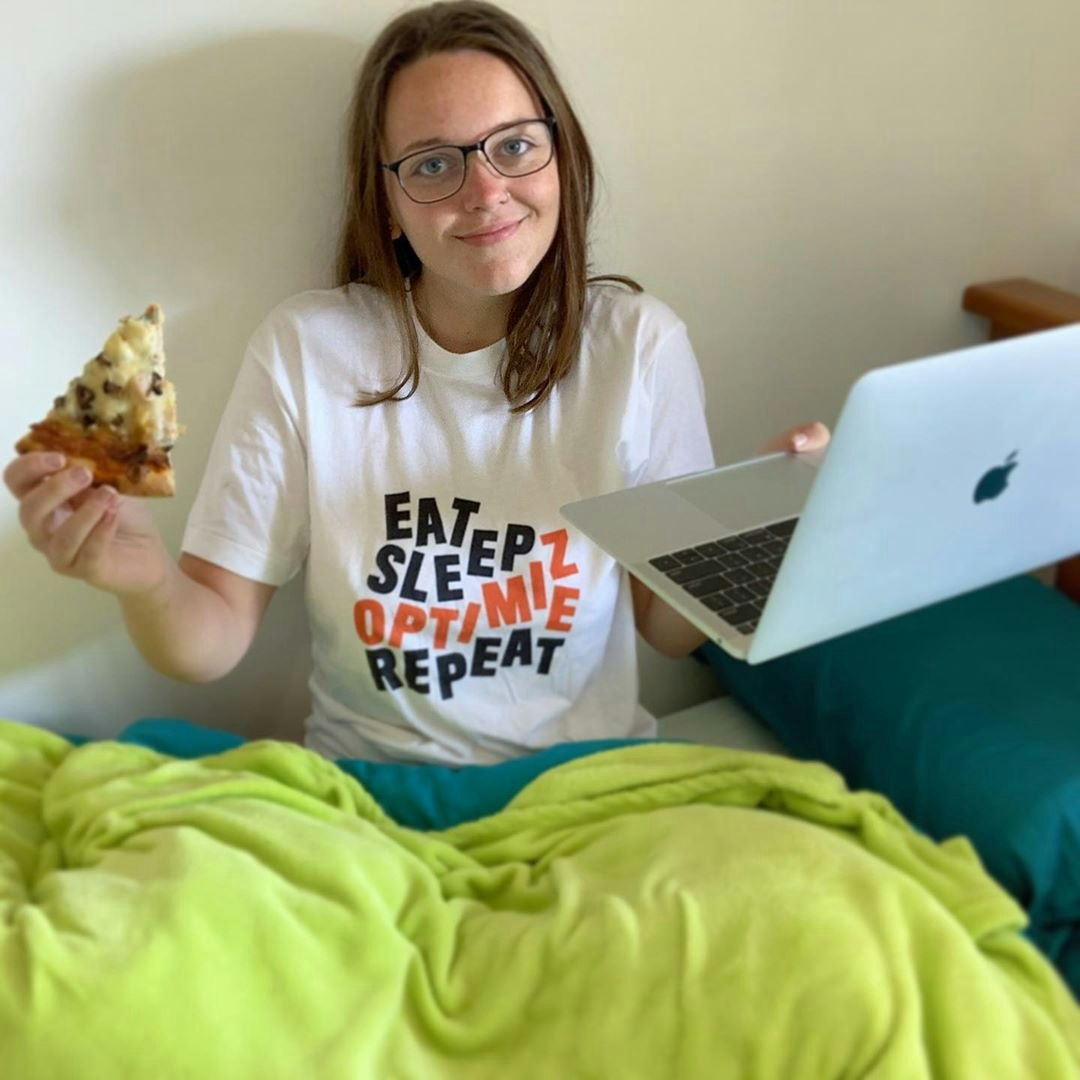
Unpacking the Four Secrets to Emma’s Success
1. Jewelry is a Winning Product
Since her first dip into ecommerce, Emma has stuck by one product type – jewelry. “It’s lightweight and small and you can price it higher,” she says. The weight of the product matters too, because you’ll be able to score free or very cheap shipping from your supplier. That means you can pass those savings onto your customers, making a more attractive offering.
But more importantly, jewelry isn’t just jewelry. “There’s lots of different niches that you can relate jewelry to,” Emma says. “So you can sell fitness jewelry to people who are really passionate about fitness, or animal jewelry to people who are really passionate about their favorite animal.”
Check out some jewelry product ideas you could target to animal lovers:
2. Look for Niche Communities
One of the best ways to set yourself up for success is to look for an audience that is deeply passionate about the niche you’re thinking of targeting. You might choose dogs, babies, fishing, or beauty. These are all things that people will gladly spend their time and money on.
To find these audiences, Emma first turns to Instagram. “I do a lot of research on Instagram using hashtags, you can find these small little niche communities on there,” she says.
Since you know yourself best, it can be useful to consider yourself as the ideal target customer, and to interrogate your own likes.
“It also helps to look at your own hobbies, and what kind of audience you’re in. Ask yourself what you’d be interested in buying. You could also consider your friends, what their hobbies are and what they’d be interested in buying. Actually show them a product and ask them what they think about it,” says Emma.
3. Try a 1+ Product Store
As a rule, Emma says, “I just don’t really believe in general stores.” Instead, she’s found success through setting up 1+ product stores. That is, creating a store where all your marketing focuses on one product, but within the store you also offer complementary products that you can use to upsell. You might sell different colour or design variants of the same product, or other products within the same niche.
In the end, you’re targeting the same audience with all your products, but offering them the chance to toss a few other products they’ll like in their basket before checking out.
“When you can really focus on one product and one audience then you can really dive deep into that and figure out exactly how to promote to them and create a brand around that,” says Emma. “But if you’re spreading yourself so thin on lots of different products, then you’re not going to go that deep and really make it work.”
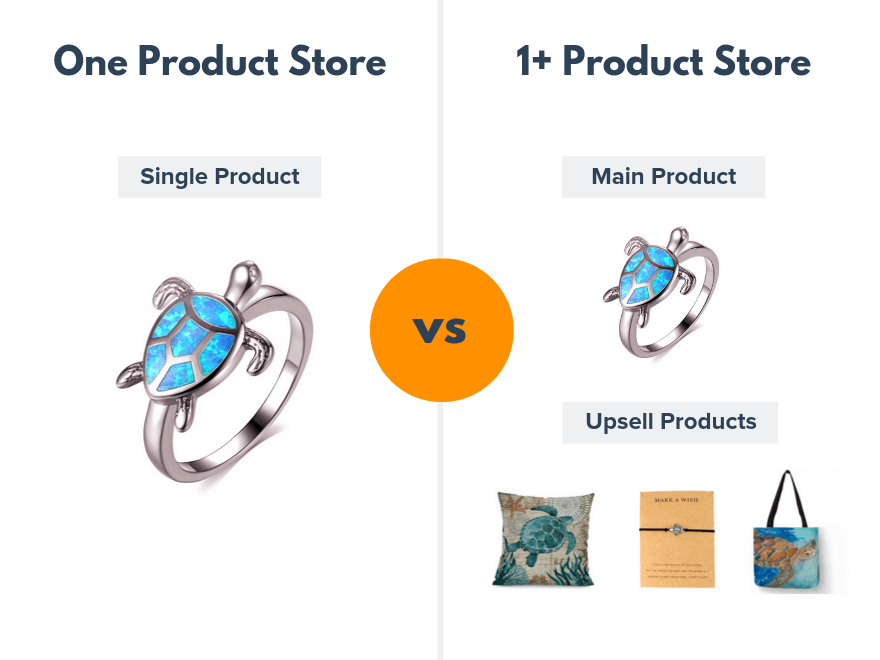
4. Try Free Traffic Methods
Especially when you’re in the early stages of building your business and trying to test your products on different audiences, it pays to think about free traffic methods first. But as Emma warns, with free traffic strategies what you save in money you’ll pay for in your time.
“It takes a lot of time and energy, but anything free usually does.” she says. “But if you have a really limited budget, or are super new in the ecommerce space, then I highly recommend going this route.”
Emma shared her two most successful free traffic tactics.
Instagram interaction and comments: “I tried to figure out who my ideal customer was, and what hashtags would they be posting in, then I commented a lot on the pictures. In the early days, I was being pretty spammy by following everyone I could, and not leaving valuable comments. It wasn’t until I changed my approach that it started to get results. I began interacting like a real human and actually having conversations with people. I was building a community, not just an Instagram page. I would try to do 100 comments a day. Try to get to know your audience. Build up some sales, some pixel data, and some profit to use for ads later.”
Ambassador programs: “After commenting so much, people started to naturally reach out and wanted to be ambassadors for the products, so I made an ambassador program. I didn’t send out free product but the ambassadors get a 40 percent off lifetime discount, as well as 20 percent commission when someone buys through their 20 percent off code. This code is personalized, like NAME20. The real kicker is, I made a lot of initial sales from the ambassadors buying the product themselves. Since they got 40 percent off and wanted the product in their hands to create better content. And the more ambassadors you have posting about you, the more of their friends start asking to join. Then it snowballs.”



Want to Learn More?
- The One Product Store: This Entrepreneur’s Simple Formula for Success
- 10 Unique Dropshipping Products to Sell in 2020
- The $0 Ad Budget: How They Grew Their Business Without a Single Advertisement
- Dropshipping Niches That Are Steady, Not Trendy
- Social Entrepreneurship: 10 Ways to Make a Difference Through Business
